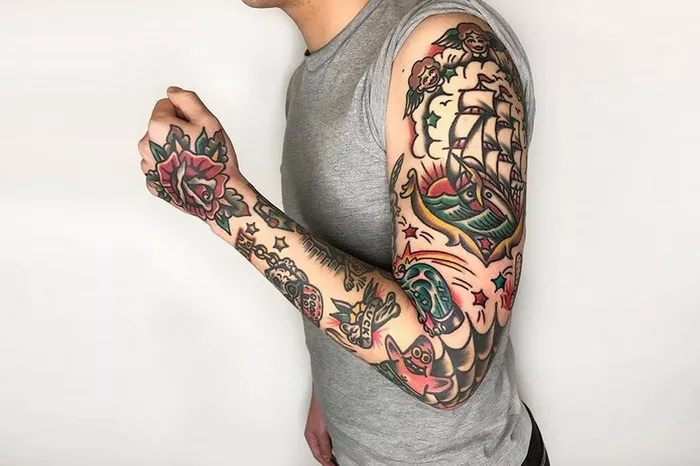Tattoos have become a ubiquitous form of self-expression in contemporary society, with individuals choosing to adorn their bodies with intricate designs that hold personal significance. Among the most popular locations for tattoos is the arm, offering a prominent canvas for artistry. However, a significant consideration for anyone contemplating getting an arm tattoo is the level of pain involved in the process. Pain perception varies widely among individuals and can be influenced by various factors, including the location on the body. This article delves into the specific question: how painful are arm tattoos? By exploring the factors that contribute to tattoo pain, techniques to manage discomfort, and personal experiences from both tattoo artists and clients, we aim to provide a comprehensive guide for those considering arm tattoos.
Understanding Tattoo Pain
Tattoo pain is subjective and can vary based on several factors, including individual pain tolerance, the location of the tattoo, the size and complexity of the design, and the skill of the tattoo artist. The arm, being a relatively fleshy and muscular area compared to other parts of the body, is generally considered one of the less painful areas to get tattooed. However, specific parts of the arm, such as the inner bicep or near joints where the skin is thinner, may be more sensitive to pain.
Factors Influencing Pain Perception
Location on the Arm: The location of the tattoo on the arm significantly affects pain perception. Areas with more muscle and fat, like the outer forearm, tend to be less painful than areas with less tissue, such as the inner arm or near the armpit.
1. Size and Design Complexity: Larger tattoos and designs that require extensive shading or intricate details may prolong the tattooing process, thereby increasing overall discomfort.
2. Individual Pain Tolerance: Pain tolerance varies widely among individuals and is influenced by factors such as genetics, previous experiences with pain, and mental state.
3. Tattoo Artist’s Technique: A skilled and experienced tattoo artist can minimize pain and discomfort by using proper techniques, such as adjusting needle depth and speed.
4. Physical and Mental Preparation: Adequate rest, hydration, and a positive mindset can help reduce perceived pain during the tattooing process.
See Also: How Painful Are Hand Tattoos: What You Need to Know
Managing Tattoo Pain
While tattoo pain cannot be entirely eliminated, there are several strategies that individuals can employ to manage discomfort effectively:
1. Choose the Right Tattoo Artist: Researching and selecting a reputable and experienced tattoo artist can ensure that the process is as comfortable as possible.
2. Communicate Openly: Discussing pain concerns and expectations with the tattoo artist beforehand allows for adjustments in technique or breaks during the session.
3. Topical Anesthetics: Some tattoo artists may offer topical numbing creams or sprays to reduce pain during the tattooing process. These should be applied as directed and may require testing for skin sensitivity beforehand.
4. Pain Management Techniques: Techniques such as controlled breathing, focusing on relaxing thoughts, or listening to music can help distract from pain and promote relaxation.
5. Take Breaks: If necessary, don’t hesitate to request short breaks during longer sessions to manage fatigue and discomfort.
Personal Experiences
To provide a well-rounded perspective on arm tattoo pain, it’s insightful to hear from both tattoo artists and individuals who have received arm tattoos:
1. Tattoo Artist Perspective: Experienced tattoo artists often have valuable insights into pain management techniques and can provide guidance on minimizing discomfort based on their years of practice.
2. Client Experiences: Personal accounts from individuals who have gotten arm tattoos can offer firsthand perspectives on what to expect in terms of pain and how they managed it during their tattooing experience.
Conclusion
Getting an arm tattoo is a personal decision that involves considerations of pain alongside aesthetic and personal preferences. While pain is an inevitable part of the tattooing process, understanding the factors influencing pain perception and employing effective pain management strategies can significantly enhance the experience. By choosing a skilled tattoo artist, preparing physically and mentally, and communicating openly throughout the process, individuals can minimize discomfort and focus on the excitement of expressing themselves through body art. Whether it’s a small symbol or a full sleeve, the journey of getting an arm tattoo is as much about the process as it is about the end result—a lasting piece of art that tells a unique story on a canvas of skin.

